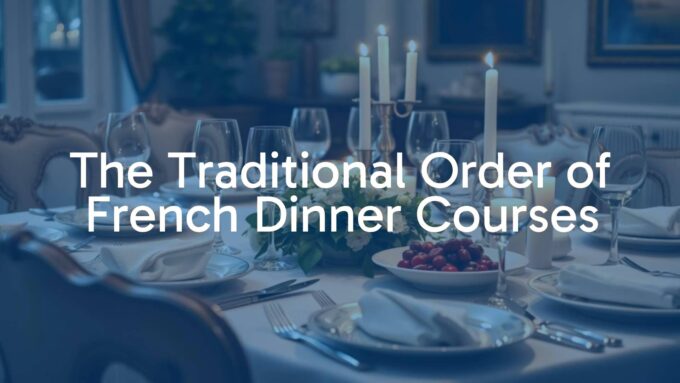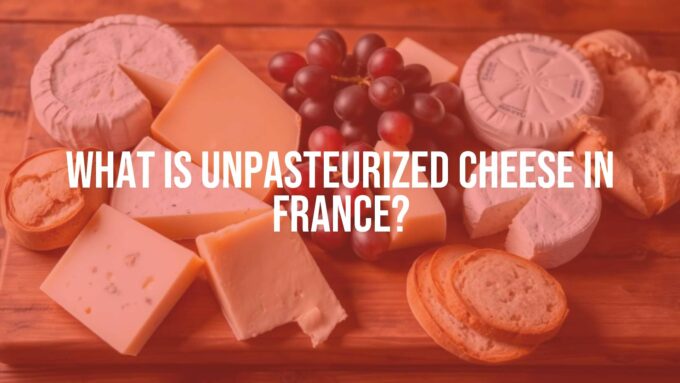French breakfast foods offer a charming and simple way to begin the day. If you’ve ever wondered what breakfast looks like in France, it’s usually much lighter and sweeter compared to the heavier morning meals in other countries. “Le petit déjeuner” (meaning “the small lunch”) is about enjoying a handful of good-quality items, such as flaky pastries, fresh bread, and warm drinks. The French tend to eat slowly and enjoy a peaceful start to the morning.

French breakfast is known for its focus on fresh, carefully chosen ingredients. It isn’t about having a huge meal first thing in the morning. Instead, breakfast in France is more about a few tasty things that satisfy you until lunchtime, which is often the main meal of the day. This approach makes breakfast a nice and relaxing start, instead of a rushed event.
What Makes a French Breakfast?
French breakfasts are usually built around baked goods, often sweet rather than savory. Unlike American or English breakfasts, which are filling and packed with eggs, meat, or beans, the French breakfast is much lighter. The main idea is to enjoy fresh bread and pastries with a few simple sides and a hot drink.
Breakfast in France is meant to be calm and slow. People often take time to savor their food and might read or chat. This relaxed feeling is just as important as what’s on the table.
Main Foods and Ingredients
Bread is the most common item at a French breakfast. The baguette is especially popular and is usually sliced, sometimes toasted, and spread with butter or jam. Other breads, like “Boule de Pain,” are also used, especially outside cities where bread needs to stay fresh longer. Bread isn’t eaten plain; it’s almost always topped with butter, jams, or honey.
Butter, often slightly salty and of very high quality, is also a common choice. Spreads like various fruit jams (“confiture”) and honey add sweetness. Fresh fruit juice, especially orange or grapefruit, is another popular addition. The meal is completed by a hot drink such as coffee, tea, or hot chocolate.

Everyday Breakfast Habits in France
French breakfast habits have changed a lot over time. Originally, people would have bread and butter, sometimes dipped in milk. Coffee made its way into breakfast in the 17th century and quickly became part of the routine. The way breakfasts are served now, with toast, coffee, and sometimes chocolate, dates back to the 19th and 20th centuries. While breads were once eaten with soup or wine in rural areas, today’s breakfast is more uniform across the country.
Now, pastries such as croissants and pains au chocolat are symbols of French breakfast, but day to day, most people eat just bread with butter and jam, plus a hot drink. Croissants and pastries are more for special days or weekends.
Popular French Breakfast Foods
When people picture French breakfast, they often think of delicious pastries, crusty bread, or soft brioche. These foods are important parts of the meal and can make breakfast feel special.
Most of these breakfast items come from local bakeries and are made fresh every day. This is part of France’s strong baking tradition, where bakers are proud of their craft.
Bread and Tartines
The classic French breakfast centers on the baguette. For breakfast, it’s often cut lengthwise and prepared as a “tartine”-a slice of baguette toasted and spread with butter and jam or honey. The taste really depends on how fresh the bread, butter, and jam are.
Sweet tartines are the norm for breakfast, while savory ones are usually eaten later in the day. The tartine is a quick and satisfying everyday meal for many people in France.
Viennoiseries: Croissants, Pain au Chocolat, and More
Viennoiseries are French pastries made from a light, buttery dough. While many think of these as the heart of French breakfast, most people save them for weekends or special occasions. Here are some favorites:
- Croissant: Buttery, flaky, and crescent-shaped. Eaten plain, with butter or jam, or even dipped in coffee. Almond croissants (croissant aux amandes) are filled and topped with sweet almond paste.
- Pain au Chocolat: Like a croissant but shaped into a rectangle with chocolate inside. In some regions, it is called a “chocolatine.”
- Pain aux Raisins: A sweet roll made of pastry dough, custard, and raisins, shaped in a spiral and sometimes topped with icing.
- Chausson aux Pommes (Apple Turnover): A pastry filled with apple sauce, usually half-moon shaped.

These pastries are loved throughout France, but most families don’t eat them every day-usually just on weekends or as a quick snack.
Brioche and Sweet Breads
Brioche is a soft, slightly sweet bread made with eggs and butter, giving it a texture similar to cake. People eat it plain, toasted, with jam, or sometimes with chocolate spread. Some even bake chocolate chips into the dough for extra flavor.
Other sweet breads, like Kougelhopf from Alsace-a tall, round brioche with nuts and raisins-add variety, especially in different regions. These breads show the range of sweet foods that fit into a French breakfast.
Other Classic Pastries
France is known for pastries, and breakfast can include more than just croissants and pain au chocolat. For instance, you might find:
- Kouign Amann: A round, buttery pastry from Brittany with a caramelized sugar crust.
- Tarte Tropézienne: A sweet brioche from the south of France, filled with creamy custard and topped with sugar.
These choices show how each area of France can have its own breakfast specialty.
Traditional Breakfast Dishes
Most French breakfasts are sweet and simple, but sometimes savory dishes appear, especially for bigger weekend meals. These usually include eggs or other fillings and add variety to the breakfast table.
Egg Dishes (Oeufs Cocotte and More)
Eggs aren’t usually eaten for breakfast in France, but when they are, they’re made in a delicate style. The most common is “oeuf à la coque”-a soft-boiled egg in a cup, served with strips of buttered bread for dipping.
For a bigger breakfast or brunch, “oeufs cocotte” are eggs baked with cream, cheese, or toppings like bacon or mushrooms. Scrambled eggs and omelettes are more common for lunch or light dinner. Dishes like omelettes with chorizo or pancetta are rare for breakfast but might be found on brunch menus.
Pain Perdu (French Toast)
Pain Perdu (“lost bread”) is what Americans call French toast. It was created as a way to use up old bread. Slices of dry bread, often brioche, are soaked in milk, eggs, and sugar, then fried until golden. You can eat pain perdu with powdered sugar, fruit, syrup, or even in savory versions. Different recipes, like overnight French toast or panettone French toast, offer more ways to enjoy it.

Crepes
French crepes are very thin pancakes. Sweet crepes (“crêpes sucrées”) are filled with sugar, jam, chocolate spread, or fresh fruit and are the most popular at breakfast. Savory crepes (“crêpes salées” or “galettes”) have fillings like cheese or ham and are more common for lunch or dinner. You can also find healthier options, such as low-carb crepes or those filled with fruit and cheese.
Quiche and Savory Tarts
Quiche is a savory pie, usually made with a pastry base and a creamy egg, cheese, and ham or bacon filling. Quiche Lorraine is the most famous, but vegetarian options with spinach, mushrooms, or broccoli exist too. While usually eaten later in the day, quiche sometimes appears at breakfast in France, mostly for brunch on the weekend.
Drinks at a French Breakfast
Breakfast in France always comes with a drink. The classic choices match the foods and help make the meal relaxing and enjoyable.
Coffee and Café au Lait
Coffee is the top pick for French breakfast. French people like strong coffee-often an espresso or as “café au lait,” coffee with hot milk. Café au lait is especially popular for breakfast and is good for dunking tartines or croissants. Tea is also served, but usually without milk.
Hot Chocolate (Chocolat Chaud)
Hot chocolate is a favorite, especially for children but also for adults. French hot chocolate tends to be thick and made with real chocolate, making it rich and smooth. Many people love dipping their bread or croissant into it.
Juices and Other Drinks
Freshly squeezed fruit juice, especially orange or grapefruit, is another breakfast standard in France. Supermarkets also sell a wide range of juices, including organic kinds. Water is always available. The main idea is to serve drinks that taste good with the food and aren’t too heavy.
Regional and Modern French Breakfasts
Even though the basic idea of a French breakfast is the same everywhere, each region has its own special dishes. Also, new health trends and international ideas are making their way into French breakfasts, especially in cities.
Regional Variations
| Region | Specialty Breakfast Item |
|---|---|
| Paris | Classic croissants and strong coffee/hot chocolate |
| Southwest France | Chocolatine (pain au chocolat under a different name) |
| Alsace | Kougelhopf, a sweet brioche with nuts and raisins |
| Brittany | Kouign Amann, a rich, caramelized pastry |
| Provence & Côte d’Azur | Tarte Tropézienne, a brioche with custard and sugar |
| Normandy | Tergoule (rice pudding) or bread with Camembert cheese |
These examples show just how different French breakfasts can be from one place to another.
Modern and Healthier French Breakfasts
Today, people in France are paying more attention to health. Breakfast might include yogurt, fruit, or muesli, especially for those who want something lighter. Cheese and bread make a simple, less sweet choice.
The idea of “brunch” is now also popular. Many cafés and restaurants serve brunch with French and international foods like pancakes and avocado toast, especially on weekends in bigger cities. No matter how the menu changes, the focus stays on eating good-quality items and taking time with the meal.
Where to Try French Breakfast Foods
If you visit France, trying breakfast at a bakery or café is something you shouldn’t miss. The smells of fresh bread, the cozy seating, and the atmosphere all make French breakfast memorable.
French Bakeries (Boulangeries)
To get the real taste of French breakfast, go to a local bakery, or “boulangerie.” Boulangeries are everywhere in France and are important to the community. Most people buy their bread and pastries here, since baking at home isn’t common. You’ll find a wide range of fresh choices every morning at affordable prices.
Some bakeries have counters or tables to enjoy your food with coffee right there. The freshness and quality of what you find at a boulangerie makes breakfast special.
Cafés in Paris and Beyond
For a slower, more relaxed breakfast, cafés are a great choice. They usually serve breakfast from about 7:30 AM (or from 6:00 AM in hotels) until 11:00 AM. Many offer set breakfast menus (“formule petit déjeuner”) with a hot drink, juice, and selection of bread or pastries.
- Terrass” Hôtel (Montmartre): Offers breakfast with a view of Paris and the Eiffel Tower, with a buffet available in the restaurant or rooftop.
- Café Lapérouse (Place de la Concorde): A stylish café with a terrace, great for breakfast with a view of famous Paris landmarks.
- Café de Flore & Les Deux Magots (Saint-Germain-des-Prés): Famous old cafés with classic French breakfasts and the option to order sets named after famous writers.
- Terasse des Créatures (Galeries Lafayette Rooftop): Serves breakfast and pastries by chef Shin Rayieu with a view over Paris.

Outside of Paris, you’ll find local cafés and bakeries all across France, each offering their take on a French breakfast.
Common Questions about French Breakfast Foods
People often have questions about what exactly makes up a French breakfast and how it compares to breakfasts in other countries. Here are simple answers to the most asked questions:
Are French Breakfasts Always Sweet?
Most of the time, yes. French breakfasts usually feature sweet foods-think bread, pastries, jam, honey, and sweet drinks like hot chocolate or juice. Still, there are occasional savory items like cheese, eggs, or quiche, but these are less common on weekdays and are mostly for brunch.
What’s in a Typical Petit Déjeuner?
- Bread: Usually a fresh baguette, sliced or toasted as “tartine.”
- Spreads: Butter, jam, and honey for your bread.
- Hot Drink: Coffee (espresso or café au lait), tea, or hot chocolate.
- Fruit Juice: Often fresh orange or grapefruit juice.
- Pastry (optional): Sometimes a croissant or pain au chocolat, usually as a treat or on weekends.
This mix keeps the meal simple but enjoyable, giving energy for the morning until lunchtime.
Do French People Eat Eggs for Breakfast?
No, eggs are not usually eaten for breakfast in France. If they are served, it’s most often as “oeuf à la coque”-soft-boiled with bread strips. Scrambled eggs or omelettes are more for lunch or dinner than for breakfast. On weekends, some people might have eggs or egg dishes with brunch, but it’s not the everyday habit.












Leave a comment